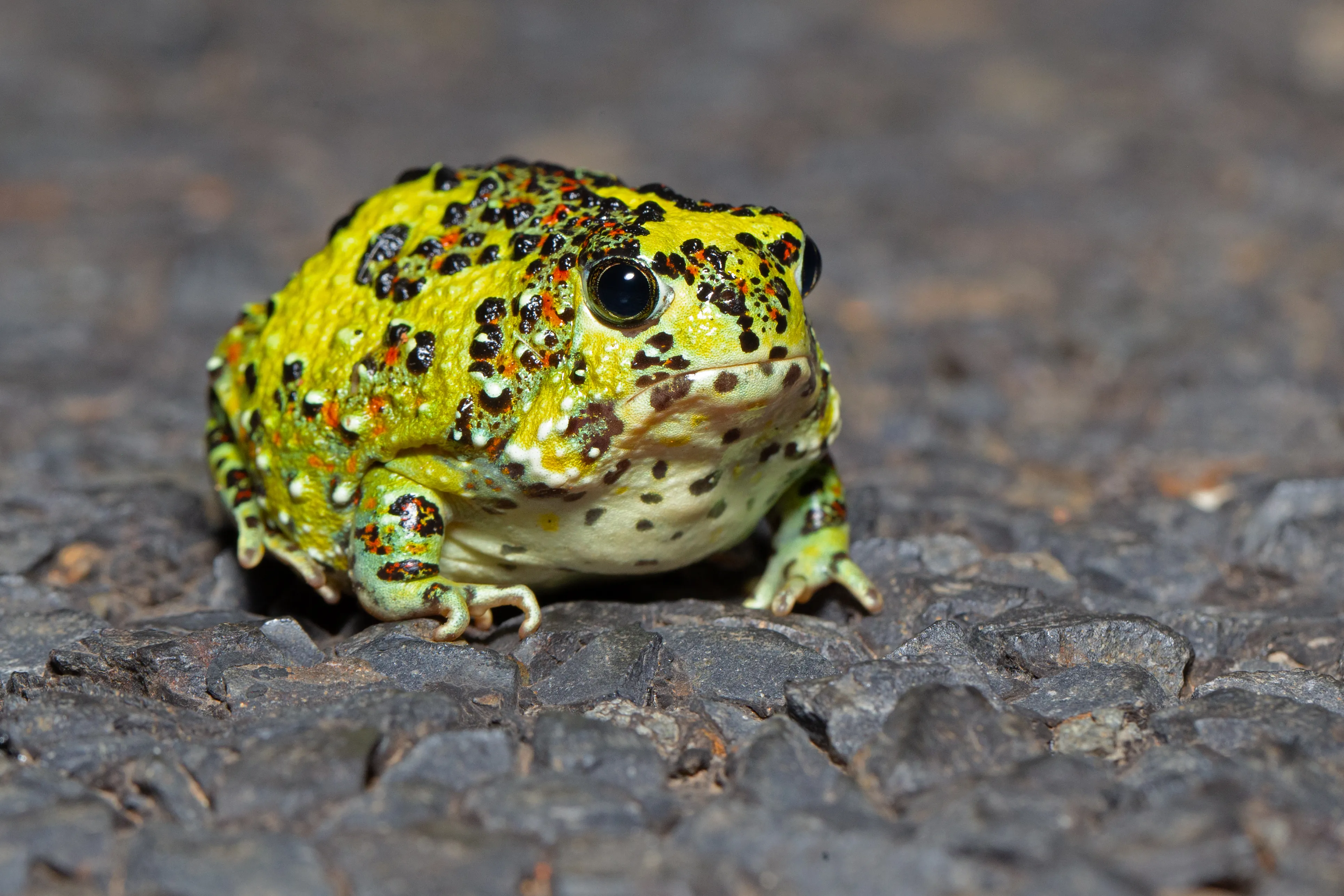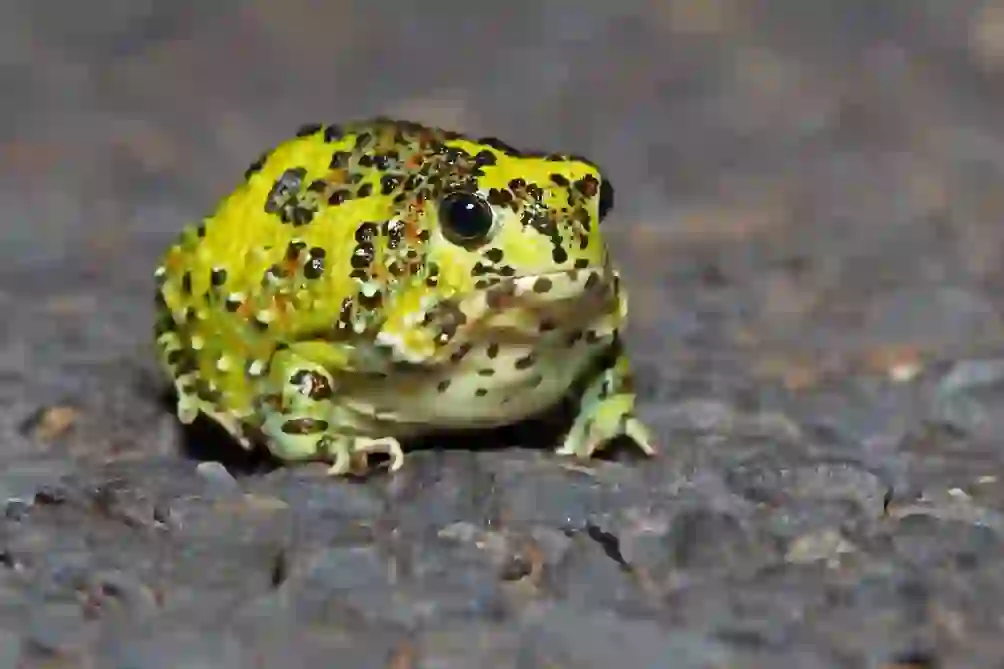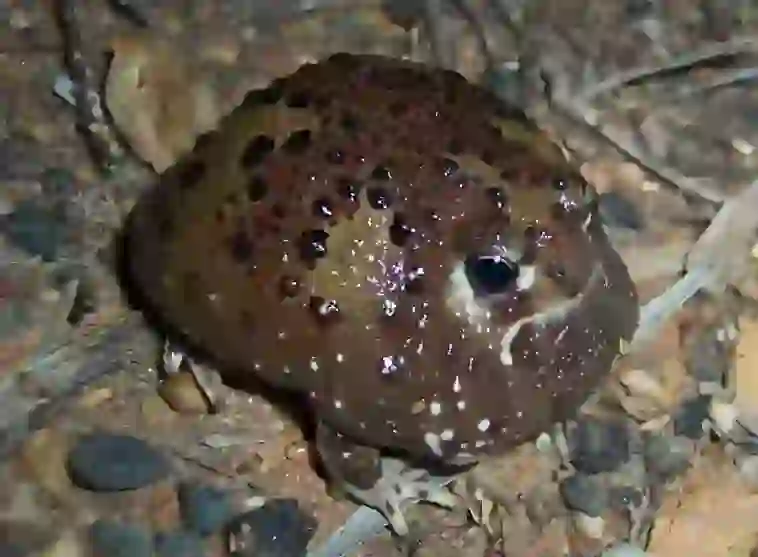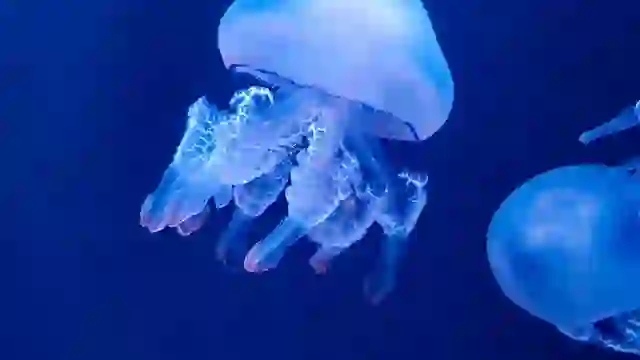
Crucifix Toad
Crucifix Toad
Crucifix Toad
The Crucifix Toad, a unique amphibian found in the arid regions of eastern Australia, gets its name from the cross-shaped marking on its back. Let's delve into the intriguing world of the Crucifix Toad and discover how it survives in this harsh environment!
Crucifix Toad Basic Infomation

| Property | Value |
|---|---|
| Scientific Name | Notaden bennettii |
| Taxonomic Status | SPECIES |
| Rank | Species |
| Vernacular Names | crucifix toad, holy cross frog, Catholic frog, Crucifix Toad |
| Kingdom | Animalia |
| Phylum | Chordata |
| Class | Amphibia |
| Order | Anura |
| Family | Limnodynastidae |
| Genus | Notaden |
| Subfamily | Limnodynastinae |

The Crucifix Toad ( *Notaden bennettii* ), also known as the holy cross frog or Catholic frog, is a species of frog in the family Limnodynastidae. It is found in eastern Australia.
They are about 4-6 cm long and have a stocky build.
Their back is gray or brown, and they are characterized by a red, cross-shaped marking.
Crucifix Toad Q&A

What kind of frog is the Crucifix Toad?
The Crucifix Toad inhabits the dry, inland regions of eastern Australia.
They spend most of their time in burrows underground, emerging to the surface and becoming active when it rains.
They feed on insects, spiders, and earthworms.

Why does the Crucifix Toad have a cross on its back?
The cross-shaped marking on the back of the Crucifix Toad is thought to be a form of warning coloration.
When threatened, they inflate their bodies, making the cross marking more prominent.
This is believed to be a way of signaling to predators that they are poisonous and should not be eaten.

How potent is the poison of the Crucifix Toad?
The poison of the Crucifix Toad is not lethal to humans.
However, contact with their skin can cause irritation or rashes.
It is especially dangerous if the poison gets into the eyes or mouth, so always wash your hands thoroughly after handling one.
If you accidentally get poison in your eyes or mouth, immediately rinse with water and seek medical attention.

How does the Crucifix Toad reproduce?
The breeding season for Crucifix Toads begins after rainfall.
Males attract females with a low, croaking call, like "wong, wong," from temporary pools.
Females lay hundreds of eggs in the water.
The eggs hatch within a few days, releasing tadpoles.
Tadpoles must develop and undergo metamorphosis quickly before the pools dry up, resulting in a very short tadpole stage.

Are Crucifix Toads endangered?
The Crucifix Toad is not currently considered endangered.
However, their habitat is shrinking due to agriculture and urban development.
The impact of climate change, such as droughts, is also a concern.
Protecting their habitat is crucial for the conservation of Crucifix Toads.

Would you like to become a part of the 'Animalbook.jp'?
Turn your knowledge into Q&A and share it with the world. ※Publication will be activated after purchase. Let's share information together!
Crucifix Toad Type of List

- Crucifix Toad
Information
Congratulations! You are the first commenter!

Create Your Favorite List!
Crucifix Toad
Save the animals you love! Build your own list to quickly revisit your favorites later.

Would you like to leave a comment?
※Please note: This is for the purchase of rights to post comments within the article.
Find Your Favorites!
Our shop offers a unique and attractive selection of goods themed around various animals.
Crucifix Toad References
Crucifix Toad Introduction of media used

JJ Harrison, CC BY-SA 3.0, via Wikimedia Commons

Tnarg 12345 at English Wikipedia, CC BY-SA 3.0, via Wikimedia Commons

Help Enrich Our Animalbook.jp with Your Media!
We are constantly looking to expand and enrich our Animalbook.jp with amazing photos and videos of animals. If you have any media that you'd like to share, please contribute and help us showcase the beauty and diversity of the animal kingdom. Your submissions will be credited and featured in our encyclopedia, reaching a wide audience of animal lovers.


















